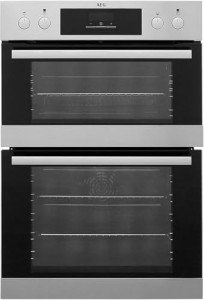The Rise of Built-In Cookers: A Comprehensive Guide
In the last few years, built-in cookers have actually gotten considerable popularity among house owners and culinary lovers alike. These appliances perfectly integrate into kitchen designs, offering a mix of performance and looks. As development continues to progress within the kitchen home appliance sector, built-in cookers have actually transformed from simple benefits into vital tools for modern cooking. This post explores various aspects of built-in cookers, including their types, benefits, installation factors to consider, and upkeep pointers.
What are Built-In Cookers?
Built-in cookers are kitchen appliances deliberately created to be integrated into kitchen cabinetry or countertops. Unlike freestanding systems that occupy standalone area, built-in cookers improve the kitchen's general style by supplying a smooth appearance. They are often part of a coordinated set that might include ovens, microwaves, and stovetops.
Kinds Of Built-In Cookers
Built-in cookers can be found in different kinds, each accommodating specific cooking styles and choices. The following table outlines typical kinds of built-in cookers:
| Type | Description | Benefits |
|---|---|---|
| Built-In Ovens | Wall-mounted or integrated ovens that save floor area. | Save area; easy gain access to; aesthetic appeal. |
| Built-In Cooktops | Stovetop systems installed directly into the counter top. | Versatile design choices; offered in gas, electric, or induction. |
| Microwaves | Built-in microwaves incorporate into cabinetry for a streamlined look. | Conserves counter top space; modern-day design. |
| Mix Ovens | Ovens that integrate standard and microwave cooking functions. | Adaptability; quicker cooking times. |
| Steam Ovens | Use steam for cooking, protecting nutrients and flavors. | Healthier cooking; perfect for veggies and fish. |
Benefits of Built-In Cookers
Purchasing built-in cookers uses various advantages that attract both functionality and style. Below are a few of the crucial benefits:
1. Area Efficiency
Built-in cookers make the most of readily available area, making them ideal for smaller sized cooking areas. They use a streamlined appearance without compromising cooking abilities.
2. Style Integration
These appliances mix flawlessly into kitchen cabinets, improving the total visual. Property owners have numerous style options, allowing them to create a cohesive kitchen appearance.
3. Enhanced Accessibility
Built-in ovens positioned at eye level eliminate the need to flex down to inspect food, making cooking a more available experience for everyone, consisting of those with movement difficulties.
4. Versatile Cooking Options
With numerous styles and performances, built-in cookers allow diverse cooking techniques. Home cooks can select appliances that best match their cooking choices.
5. Increased Home Value
Stylish built-in cookers can improve the home's total worth, especially in competitive realty markets. Buyers often choose well-equipped kitchens.
Setup Considerations
While built-in cookers provide numerous advantages, their installation needs cautious planning. Here are important elements to think about:
- Space Measurement: Before buying any built-in cooker, it's essential to determine the desired location properly. Appliances need to fit effortlessly within existing kitchen cabinetry, leaving appropriate ventilation space.
- Electrical Power and Gas Supply: For built-in electrical cookers, ensure that sufficient electric circuitry is offered. Gas cookers need appropriate gas line setup.
- Professional Installation: Due to their intricacy, built-in cookers frequently require expert setup. Employing an expert guarantees security and proper operation.
- Maintenance Access: Consider how the cooker will be accessed for cleaning and maintenance. This Resource site should remain a top priority throughout installation.
- Compatibility with Other Appliances: Ensure that brand-new built-in cookers are compatible with existing kitchen appliances for a cohesive style.
Upkeep Tips for Built-In Cookers
Keeping built-in cookers in leading condition boosts their performance and longevity. Here are some upkeep ideas:
- Routine Cleaning: Regularly tidy the oven and cooktop surfaces to avoid accumulation of grease and gunk. Make use of non-abrasive cleaners appropriate for the home appliance product.
- Examine Connections: Regularly check gas lines and electrical connections for safety. Right away resolve any signs of wear or damage.
- Change Filters: Many built-in ovens and microwaves include filters that require replacement. Follow the manufacturer's guidelines for changing these elements.
- Calibration: Over time, built-in ovens might need recalibration to guarantee precise temperature level settings. Seek advice from the user handbook for standards on how to recalibrate.
- Expert Service: Schedule professional upkeep checks regularly to guarantee that all components function efficiently.
Built-in cookers represent a substantial advancement in kitchen design and functionality. Their smooth integration into cabinetry not just improves the visual appeal of a kitchen but likewise improves effectiveness and use. By comprehending the numerous kinds of built-in cookers, their advantages, and considerations for setup and maintenance, property owners can make educated options that elevate their cooking experience.
Regularly Asked Questions (FAQs)
1. Are built-in cookers more pricey than freestanding models?
While built-in cookers may have a greater preliminary expense, they frequently supply better setup looks and greater performance, making them a beneficial investment for many homeowners.
2. Can I set up a built-in cooker myself?
Though some property owners choose to install built-in cookers themselves, it is often advisable to employ an expert due to the intricacies included, particularly with gas lines and electric wiring.
3. How do I pick the ideal built-in cooker for my kitchen?
Consider your cooking habits, kitchen style, and area limitations when picking built-in cookers. It's also necessary to examine the source of power and preferred performances.
4. What is the lifespan of a built-in cooker?
With correct upkeep, built-in cookers, especially ovens, can last lots of years-- often varying from 10 to 20 years, depending upon the brand and usage.
5. Are built-in cookers energy-efficient?
Lots of contemporary built-in cookers feature energy-efficient technologies, such as convection cooking and wise functions, which can assist reduce energy usage.
Built-in cookers use an advanced service to contemporary cooking needs while enhancing the kitchen's general esthetic. As cooking patterns continue to evolve, these appliances will likely remain an integral part of kitchen styles for years to come.

